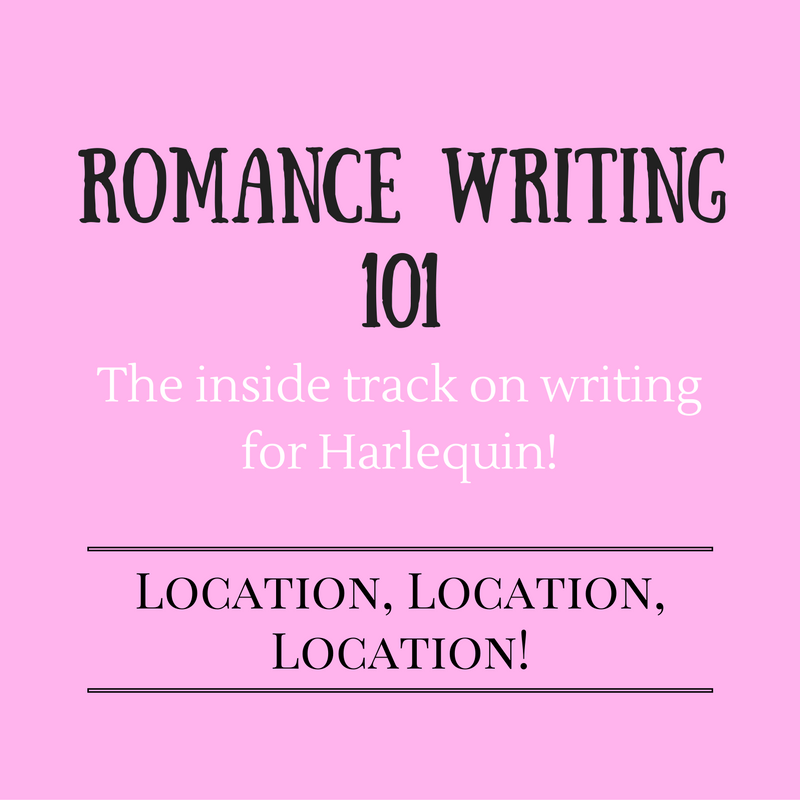

Harlequin insider Grace talks you through finding the perfect setting for your story – and bringing it to life!
Hello, dear writers! On this very atmospheric London evening, with grey clouds hovering over a murky blue sky and buildings glittering out the window in the descending night sky, I’m going to write about… settings!
Location, location, location!
Now, settings can definitely be the place (hawhaw) where writers get to go to town. Writing a good setting and describing it well is like building up a stage-set, upon which your action will take place. Medieval castles and Regency ballrooms; royal palaces and sleek penthouses; hospitals, offices, desert islands, Western ranches – oh my! Any of these or more, depending, of course, on your target series, can be the location for your romance. Always feel free to have fun with where you choose to locate your romance – it has infinite scope for adding atmosphere!
So when you first start planning out your book, think about where you want it to take place, and where the key moments will be. So much ambience can be given or taken away by this, and it’s important that your settings are right for your characters and the emotional journey they’re about to embark on, emphasising the romance and tension at vital moments.
What surrounding will give the most emphasis when your hero and heroine share their first kiss? When they have their black moment? When they finally realise their love for each other?
If you’ve spent the story building up an unparalleled level of tension between your characters, having their final confession of love in, let’s say, a Nando’s, might diffuse this somewhat (unless of course Portuguese fried chicken is a vital part of the story). But having it under a starlit sky, in his magnificent bedroom, on a beach, or for that matter anywhere of significance to that couple and their unique love, can really elevate it and give the reader the most spectacular fireworks moment possible.
The devil’s in the details…
Having said that, it can be so very, very tempting to go into paragraphs of flowing description of your settings. This is particularly applicable to any story with a fantasy-esque element – if it’s somewhere the reader is likely to be familiar with, no problem. But a Sheikh’s Arabian Nights-style palace? Boom! Three pages of description. Keeping the focus on how your hero and heroine interact within that setting is the best way to focus this. It’s about keeping the story moving along as excitingly as possible.
Instead focus on the details, and how the character you’re writing about reacts to them. You don’t want to make the reader work too hard, but it’s also better to let their imaginations lead sometimes. Everyone has their own unique idea of how certain places will look, so don’t be afraid to hold back on overt description and let them envision their own romantic settings!
Full of character…
Place can say so much about a person, especially if it’s one that is personal to them. As your characters go about their business falling in love, just consider what restaurants they might choose to go to, where they go shopping for clothes, their place of work, where they meet their friends – and also what places they maybe don’t want to go, that might hold memories for them. Characters with difficult or even tragic backstories may have family homes, hospitals, or a myriad of other places that they never wish to revisit, until forced to by circumstance. All of these can provide an insight into a person. If your hero takes his heroine somewhere small and secluded or glamorous and ostentatious for a romantic evening, it gives the reader an insight into him and his motivations.
This can be applied even more so to a character’s home. Where people live and how they choose to live says so much about them – if someone walked into your home, what would they notice about your space? Whether it’s your heroine’s family home, your hero’s lavish apartment or anywhere in between, the character seeing it for the first time will be given a unique insight into their love interest – and you can utilise this to develop their understanding of each other!
That’s all, possums! Next time I’ll be writing about secondary characters – so until then, I hope you’re keeping your eyes open for any unique settings that might inspire your stories! Cheerio!




